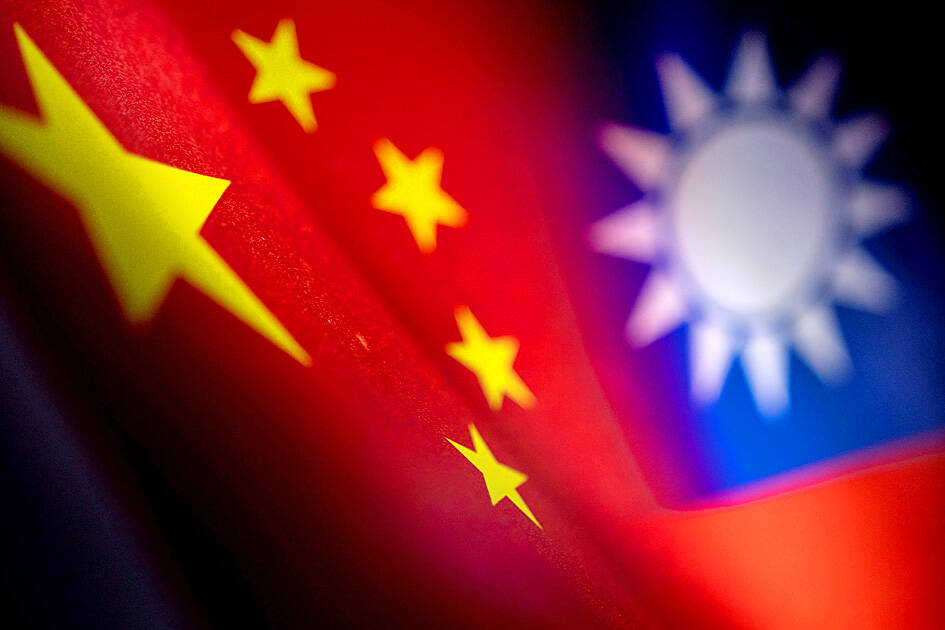Chinese Nationalist Party (KMT) caucus whip William Tseng (曾銘宗) yesterday said that Chinese state media had taken a phrase from the so-called “1992 consensus” out of context, after a state-run newspaper published an article on Saturday saying there could be no other interpretation of “China.”
The “1992 consensus” — a term that former Mainland Affairs Council chairman Su Chi (蘇起) in 2006 admitted making up in 2000 — refers to a tacit understanding between the KMT and the Chinese Communist Party (CCP) that both sides of the Taiwan Strait acknowledge that there is “one China,” with each side having its own interpretation of what “China” means.
The Ren Min Zheng Xie Bao, to mark the 30th anniversary of the Hong Kong talks — where the consensus was supposedly reached between representatives of Taiwan’s Straits Exchange Foundation and China’s Association for Relations Across the Taiwan Straits — on Saturday said that some senior members of the KMT in the past few years had sought to change the meaning of the term “1992 consensus.”

Photo: Reuters
The “1992 consensus” and “one China with different interpretations” both exist, Tseng said, adding that the KMT refused to accept singling out either part of the consensus, and neither would Taiwanese.
Democratic Progressive Party Legislator Wang Ting-yu (王定宇) said that Beijing’s stance was “a real slap in the KMT’s face.”
The KMT insists on the existence of the consensus, trying to deceive Taiwanese into thinking that the two sides of the Strait have their own interpretations of what “China” means, he said.
However, Beijing considers maintaining the “status quo” by using the names “Republic of China” or “Taiwan” as advocating for Taiwanese independence, he said.
For Beijing, there is only one China and one interpretation of it, he added.
Chinese media are bound by law to serve the CCP’s interests, and the article would have been reviewed by the Publicity Department of the CCP, he said.
China’s recent moves have made its ambition to annex Taiwan increasingly clear, while also showing that it does not care for the KMT, he said.
If KMT members “still have brains and a conscience,” they should accept that Taiwanese are facing China’s threats, he said.
“Only by protecting Taiwan can we resist China” and protect Taiwan’s democracy, freedom and economy, he added.

TRAGEDY STRIKES TAIPEI: The suspect died after falling off a building after he threw smoke grenades into Taipei Main Station and went on a killing spree in Zhongshan A 27-year-old suspect allegedly threw smoke grenades in Taipei Main Station and then proceeded to Zhongshan MRT Station in a random killing spree that resulted in the death of the suspect and two other civilians, and seven injured, including one in critical condition, as of press time last night. The suspect, identified as a man surnamed Chang Wen (張文), allegedly began the attack at Taipei Main Station, the Taipei Fire Department said, adding that it received a report at 5:24pm that smoke grenades had been thrown in the station. One man in his 50s was rushed to hospital after a cardiac arrest

SAFETY FIRST: Double the number of police were deployed at the Taipei Marathon, while other cities released plans to bolster public event safety Authorities across Taiwan have stepped up security measures ahead of Christmas and New Year events, following a knife and smoke bomb attack in Taipei on Friday that left four people dead and 11 injured. In a bid to prevent potential copycat incidents, police deployments have been expanded for large gatherings, transport hubs, and other crowded public spaces, according to official statements from police and city authorities. Taipei Mayor Chiang Wan-an (蔣萬安) said the city has “comprehensively raised security readiness” in crowded areas, increased police deployments with armed officers, and intensified patrols during weekends and nighttime hours. For large-scale events, security checkpoints and explosives

A car bomb killed a senior Russian general in southern Moscow yesterday morning, the latest high-profile army figure to be blown up in a blast that came just hours after Russian and Ukrainian delegates held separate talks in Miami on a plan to end the war. Kyiv has not commented on the incident, but Russian investigators said they were probing whether the blast was “linked” to “Ukrainian special forces.” The attack was similar to other assassinations of generals and pro-war figures that have either been claimed, or are widely believed to have been orchestrated, by Ukraine. Russian Lieutenant General Fanil Sarvarov, 56, head

PUBLIC SAFETY: The premier said that security would be tightened in transport hubs, while President Lai commended the public for their bravery The government is to deploy more police, including rapid response units, in crowded public areas to ensure a swift response to any threats, President William Lai (賴清德) said yesterday after a knife attack killed three people and injured 11 in Taipei the previous day. Lai made the remarks following a briefing by the National Police Agency on the progress of the investigation, saying that the attack underscored the importance of cooperation in public security between the central and local governments. The attack unfolded in the early evening on Friday around Taipei Main Station’s M7 exit and later near the Taipei MRT’s Zhongshan